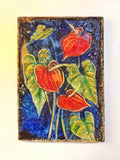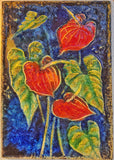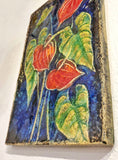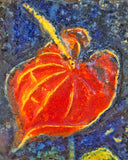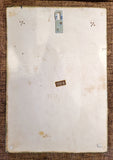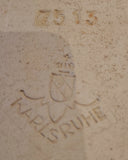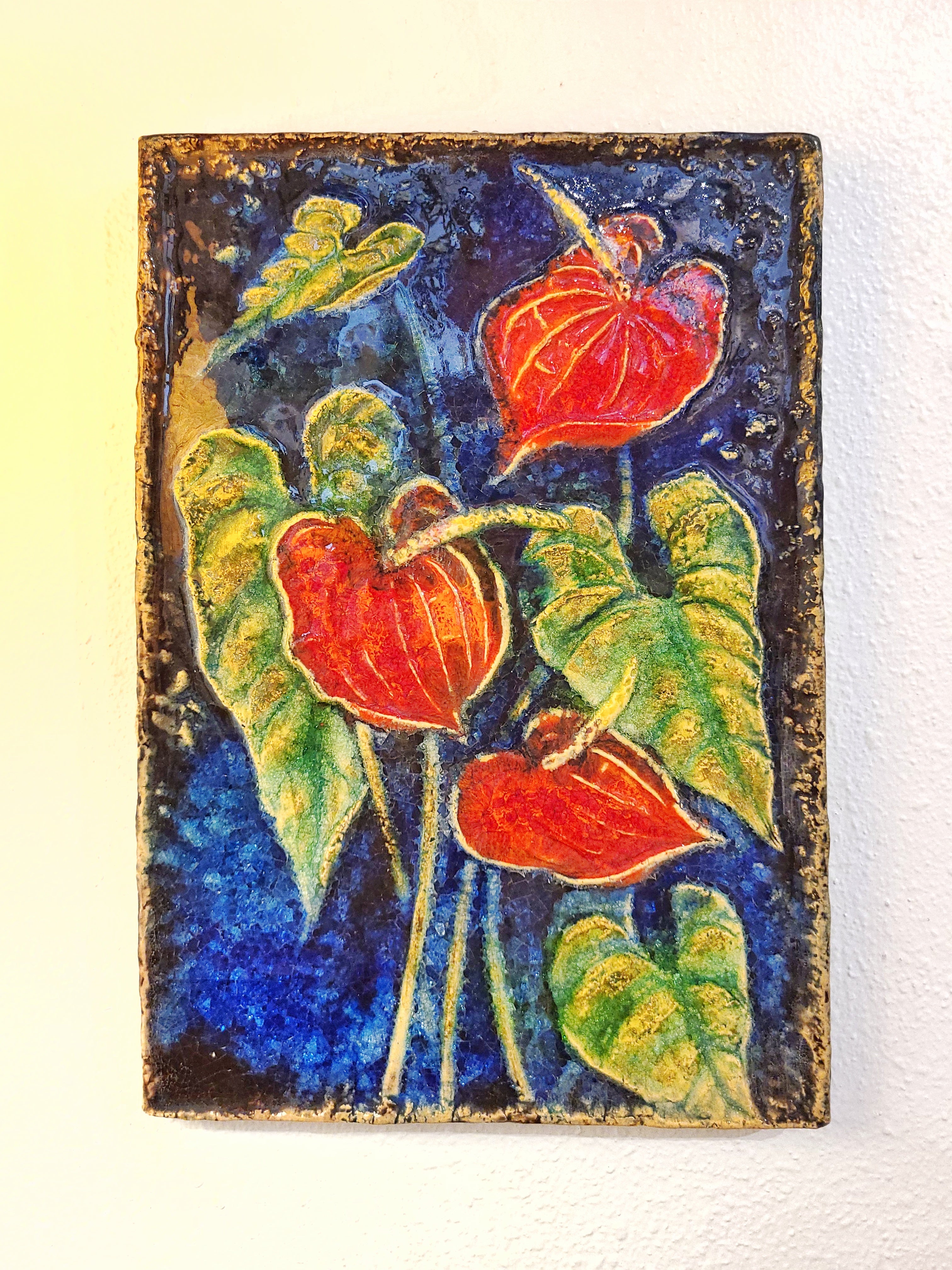


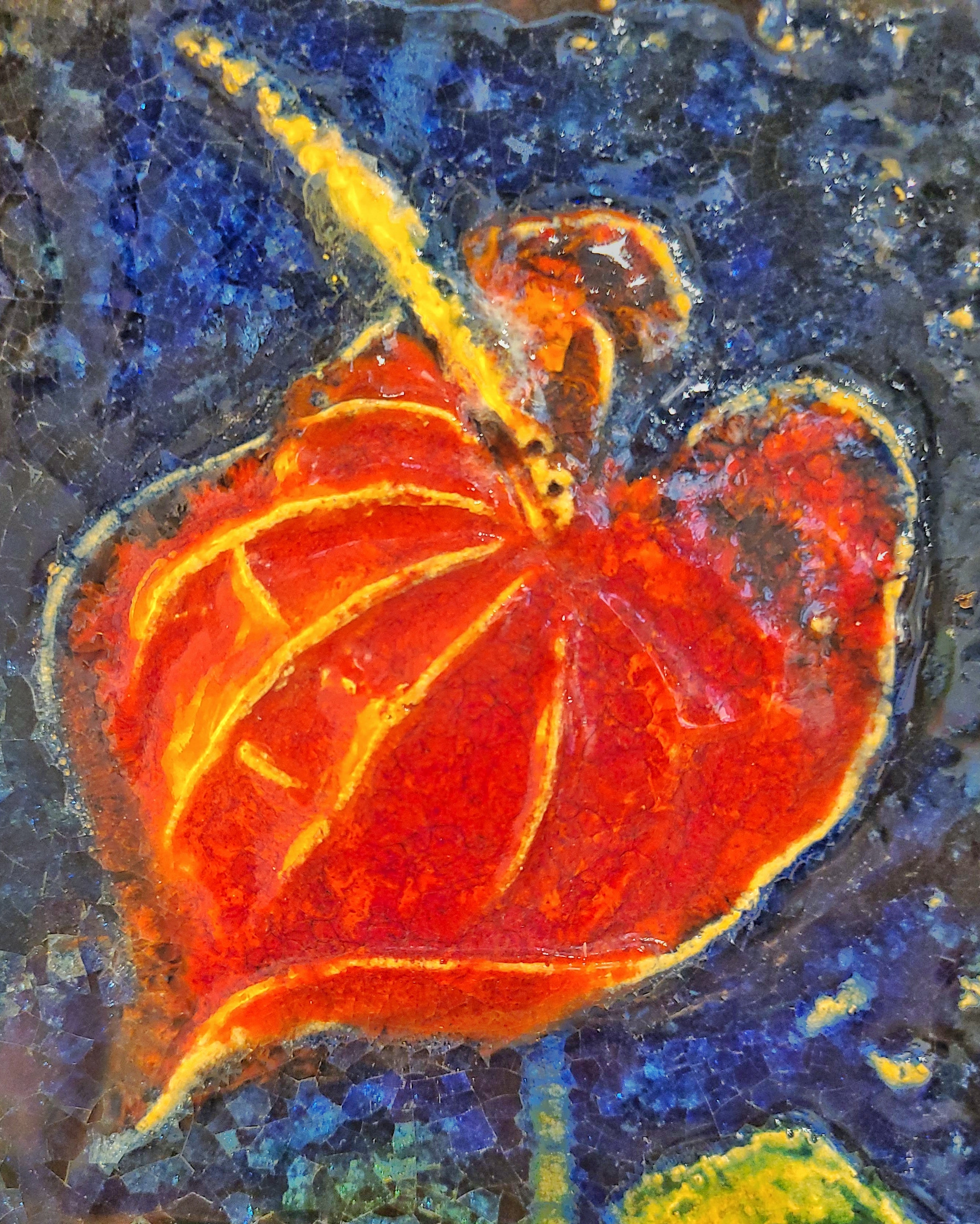

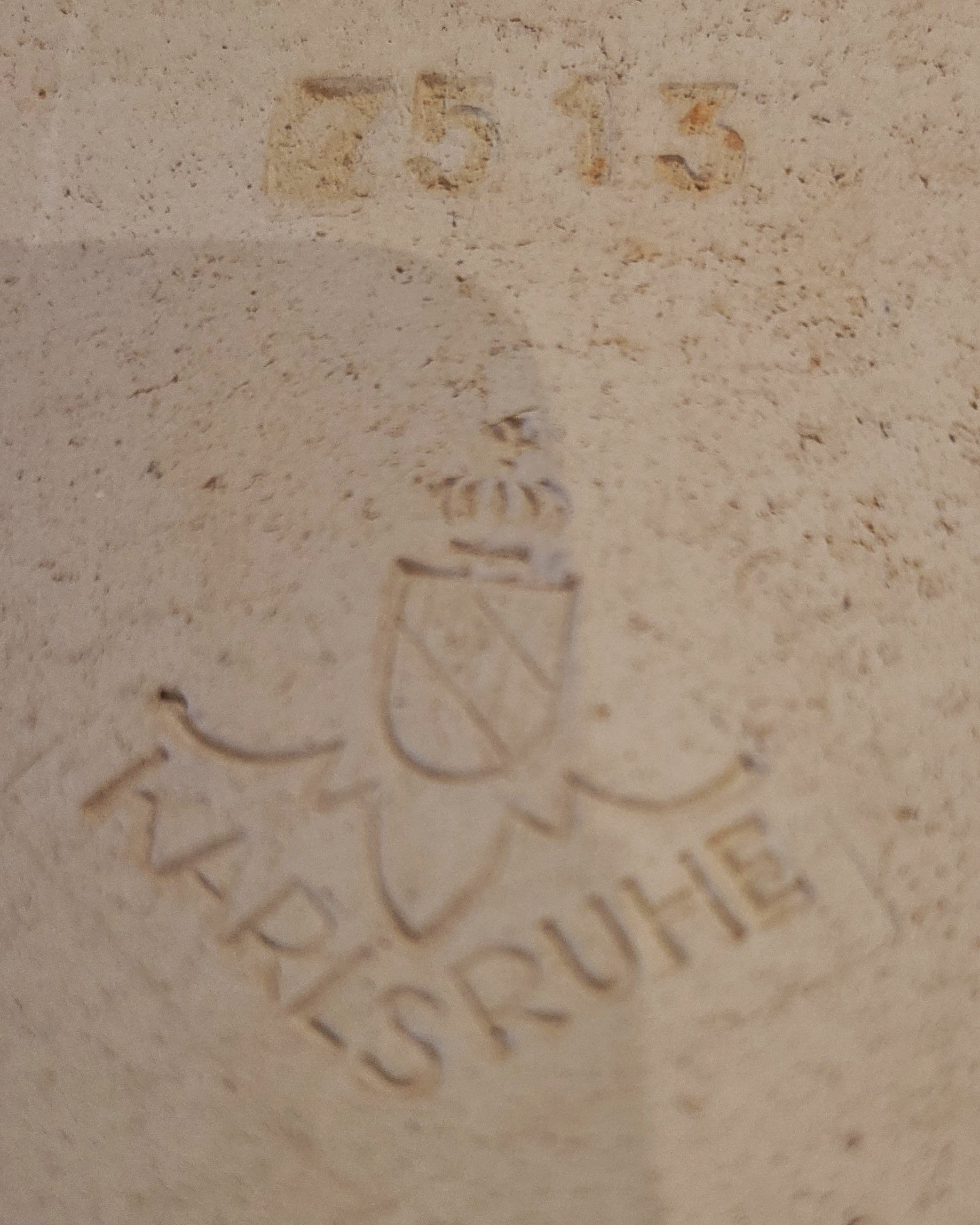

WERNER MESCHEDE ‘ANTHURIUM’ WALL TILE Nr. 7513 FOR MAJOLIKA KARLSRUHE
CONTACT US HERE ABOUT THIS ITEM.
A beautiful majolica 'ANTHURIUM' wall tile designed by Werner Meschede as part of his 'Botanicals' series for Majolika Karlsruhe between 1966 and 1978.
WERNER MESCHEDE was one of the most significant majolica designers of the 20th century. Born in Stuttgart in 1925, he studied under the tutelage of the ceramic artist Max Laüger and began work as a potter in Schorndorf, a small town near Stuttgart, after WWII. In 1958 Meschede received his mastership from the State Academy of Fine Arts Stuttgart. He was soon hired by MAJOLIKA KARLSRUHE, and for many years he served as its director of screen-printing, producing architectural and garden ceramics as well, both singularly and in series. Meschede is well known for his botanical series of majolica wall plaques and tiles, as well as numerous lava-glaze vases, crackled items, and plates.
MAJOLIKA KARLSRUHE (more formally, Majolika Manufaktur Karlsruhe) was organized at Karlsruhe in southwest Germany in 1901 when Grand Duke Friedrich I agreed to build a ceramics factory at the behest of German pictorial artists Wilhelm Süs and Hans Thoma. Their goal was to revive the so-called "majolica" or faience technique, where opaque, tin-based glazes were applied to earthenware to serve as the basis for colored decoration. (The tin glaze used in majolica is actually a lead glaze that has been rendered white and opaque by the addition of tin oxide. In the production process, unglazed articles are first fired in a kiln and then dipped in the tin glaze, which is allowed to dry. Designs are then painted on the glaze, which sets them off and preserves them during a second, high-temperature firing.) Towards the end of the decade, a signature style of majolica had developed: compositions, often including cherubim, on a blue background.
The pottery passed through various hands in the following years, at one time being occupied by Villeroy & Boch, with the premises being owned by the state of Baden. (In 1927 the word 'Staatliche' was added to the name to indicate state ownership.) Despite the specificity of its name, KARSLRUHER MAJOLIKA produced a wide range of artisan ceramics and was one of Germany's leading producers of ceramics generally. The quality of production was excellent. Top designers prior to WWII included Ludwig König and Max Läuger.
The factory was badly damaged by bombs in 1944 and did not return to the full-time production of decorative goods until the 1950's, when business resumed much as in pre-war days, with both company-employed and freelance designers. One of the foremost post-war designers was Friedegart Glatzle, who joined MAJOLIKA KARLSRUHE in 1951, and who over the next 30 years produced a huge range of designs. Other designers of note during this period included luminaries Eva Fritz-Lindner and Werner Meschede. To this day the company provides artists with their own studio space and commissions work from them. Product examples can be seen at the Badisches Landesmuseum in Karlsruhe.
Most MAJOLIKA KARLSRUHE pieces bear the company's name and symbol—the arms of Baden above a double-joined 'M' for Majolika-Manufaktur. Items are made with a red-orange clay and are marked with a form number.
| Designer | WERNER MESCHEDE |
|---|---|
| Manufacturer | Karlsruher Majolika |
| Design Period | 1960 to 1969 |
| Year of Production | |
| Production Period | 1970 to 1979 |
| Country of Manufacture | Germany |
| Identifying Marks | This piece has an attribution mark |
| Style | Vintage, Mid-Century, Modernist |
| Detailed Condition | Excellent — This vintage piece is in near original condition. It may show minimal traces of use and/or have slight restorations. |
| Product Code | CRM-730777 |
| Materials | Ceramic, Stoneware |
| Color | Blue, green, red, yellow |
| Width | 28 inch 11.0 inch |
| Depth | 3 inch 1.0 inch |
| Height | 41 inch 15.8 inch |

